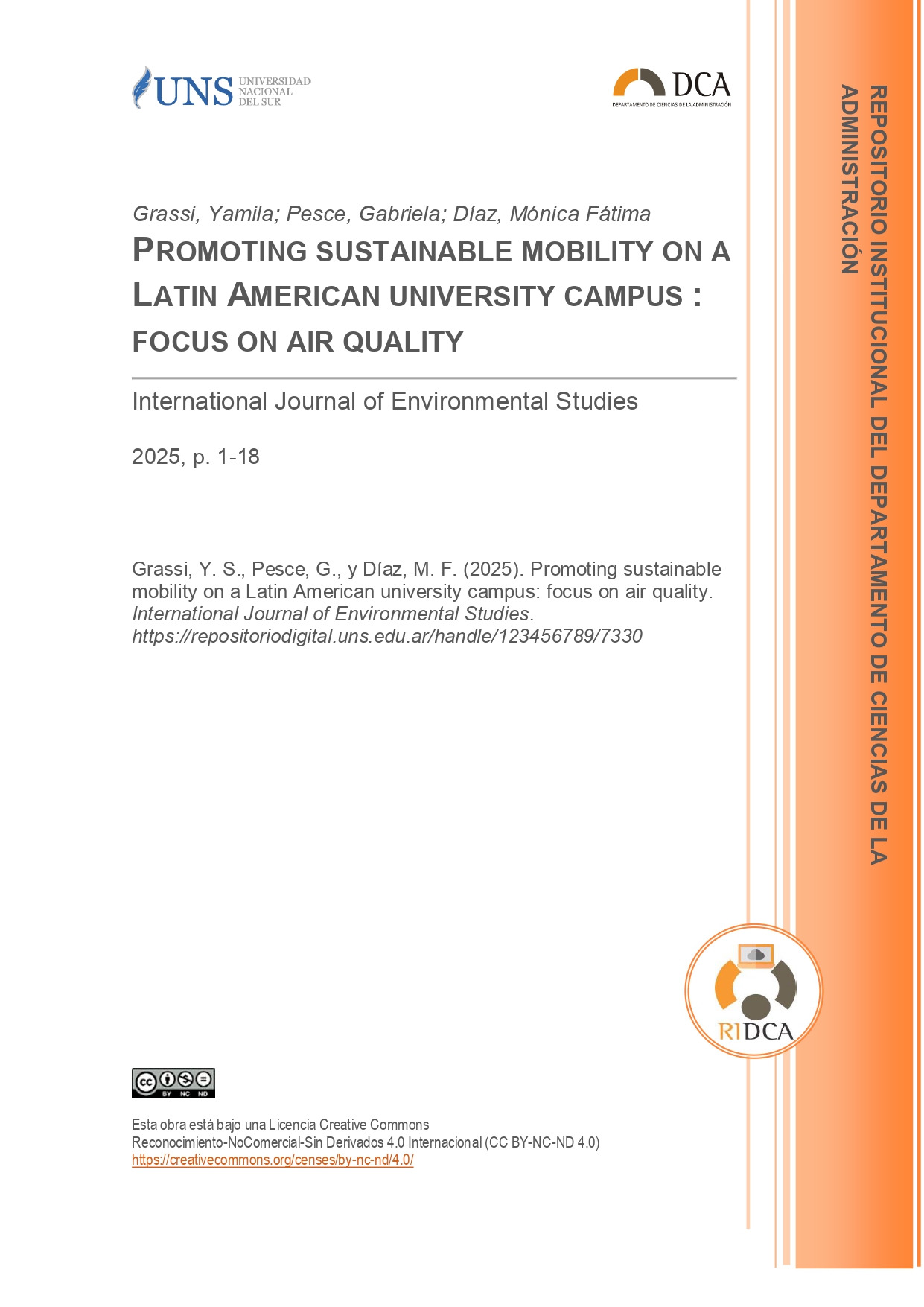Promoting sustainable mobility on a Latin American university campus : focus on air quality
Fecha
2025Autor
Pesce, Gabriela
Grassi, Yamila
Díaz, Mónica Fátima
Palabras clave
Vehicular emission; Urban mobility; University lifestyleEditorial
Taylor and FrancisMetadatos
Mostrar el registro completo del ítemResumen
Universities provide ideal study areas for assessing sustainable mobility with the potential for city-wide impacts. This study was conducted at the Universidad Nacional del Sur’s ‘Altos de Palihue’ campus in Bahía Blanca, Argentina. The aim is to estimate the CO, NOx, and CO2 emissions resulting from the campus community’s mobility choices during five time slots in a high academic activity period. The results show that cars dominate the campus vehicle fleet at both entrances (70% and 82%), as in the city, with bicycles accounting for 9%, double the proportion observed in the microcentre (streets lacking bike lanes). The highest levels of CO, NOx, and CO2 emissions were detected in the afternoon. The study analyses a carpooling scenario increasing the number of passengers transported by private vehicles by 39% and 42% at each access. CO and NOx emissions could be reduced by ~ 16% and CO2 emissions by ~ 26% under the proposed scenario.
Referencia bibliográfica
Grassi, Y. S., Pesce, G., y Díaz, M. F. (2025). Promoting sustainable mobility on a Latin American university campus: focus on air quality. International Journal of Environmental Studies. https://repositoriodigital.uns.edu.ar/handle/123456789/7330Colecciones
- Artículos Científicos [195]

